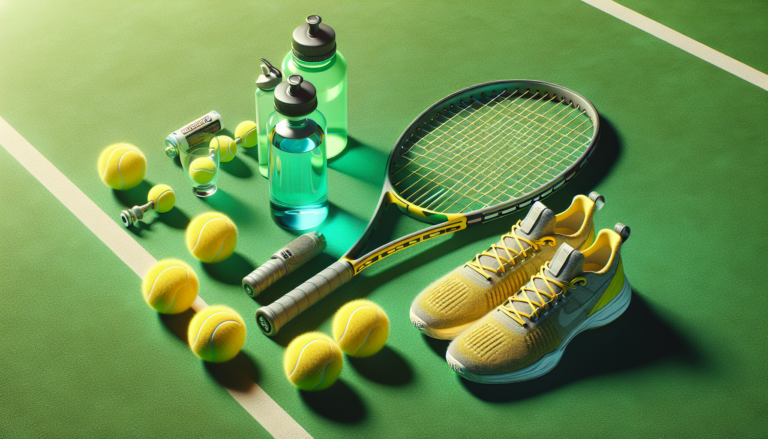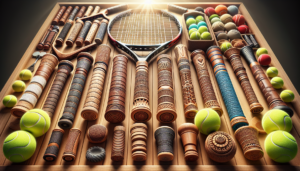Introduction to Tennis
Tennis is a captivating sport that has enthralled millions of people worldwide. It is a physically demanding game played on various surfaces, including hard courts, clay courts, and grass courts. The sport has produced numerous global stars, such as Rod Laver, Martina Navratilova, Pete Sampras, Steffi Graf, Roger Federer, Rafael Nadal, Novak Djokovic, and Serena Williams. For those new to the game, this comprehensive guide will introduce you to the basics of tennis and help you get started on your journey to becoming a skilled player.
What is Tennis?
Tennis is a sport played between two players (singles) or two teams of two players each (doubles). The objective is to hit a ball over a net into the opponent’s court in such a way that the opponent cannot return it successfully. Players use racquets to strike the ball, and the game is played on a rectangular court divided by a net in the middle. The court is marked with specific lines that define the playing area.
History of Tennis
The origins of tennis can be traced back to 12th-century France, where a game called “jeu de paume” (game of the palm) was played. Over time, the game evolved, and the modern form of tennis emerged in the late 19th century in England. The first Wimbledon Championships, one of the most prestigious tennis tournaments, was held in 1877. Today, tennis is played at various levels, from recreational to professional, and the sport continues to grow in popularity globally.
Essential Tennis Equipment
To start playing tennis, you will need some essential equipment. The most important items are a tennis racket, tennis balls, and appropriate athletic wear.
Tennis Racket
A tennis racket is your primary tool for hitting the ball. It consists of a frame with a network of tightly stretched strings. The maximum length of a tennis racket is 73.7 cm (29 inches), and the maximum width is 31.7 cm (12.5 inches). When choosing a racket, consider factors such as your skill level, playing style, and comfort. Beginners may opt for a larger, more forgiving racket, while advanced players often prefer a smaller, more precise one.
Tennis Ball
Tennis balls are spherical and typically yellow in color. They are designed to bounce well on the court surface. According to the International Tennis Federation (ITF) regulations, a tennis ball must have a diameter between 6.54 cm and 6.86 cm and weigh between 56.0 grams and 59.4 grams. Beginners should start with regular-duty balls, which are slightly softer and have a lower bounce compared to extra-duty balls used by advanced players.
Tennis Court and Dimensions
A tennis court is a rectangular playing surface divided by a net in the middle. The court dimensions are as follows:
| Court Type | Length | Width (Singles) | Width (Doubles) |
|---|---|---|---|
| Total Court | 23.77 m (78 ft) | 8.23 m (27 ft) | 10.97 m (36 ft) |
| Service Boxes | 6.40 m (21 ft) | 4.12 m (13.5 ft) | 4.12 m (13.5 ft) |
The net at the center of the court is 0.91 m (3 ft) high at the posts and 0.86 m (2 ft 10 inches) high at the center. The court surface can be made of various materials, such as hard court (concrete or asphalt), clay, or grass.
Basic Rules of Tennis
Understanding the basic rules of tennis is essential for playing the game correctly and enjoying it to the fullest.
Starting a Match
A tennis match begins with a coin toss to determine which player will serve first and which side of the court each player will start on. The player who wins the toss can choose to either serve or receive first, or they can select which side of the court they want to start on. The server must stand behind the baseline on the right side of the court and serve diagonally across the net into the opponent’s service box.
Scoring System
The tennis scoring system can seem confusing at first, but it is relatively simple once you understand the basics. Points are awarded as follows:
- 0 points = Love
- 1 point = 15
- 2 points = 30
- 3 points = 40
- 4 points = Game (assuming a two-point lead)
To win a game, a player must win at least four points with a two-point lead. If both players reach 40-40 (known as deuce), the game continues until one player has a two-point advantage. The first player to win six games with a two-game lead wins the set. Most matches are played as best-of-three sets, while some professional tournaments, such as Grand Slams, use a best-of-five format for men’s singles.
Common Faults and Penalties
There are several common faults and penalties in tennis that result in losing a point:
- Service fault: If the serve does not land in the correct service box or touches the net before landing in the service box, it is a fault. If a player commits two consecutive faults, it results in a double fault, and the opponent wins the point.
- Foot fault: During the serve, the server must not touch the baseline or the court with either foot before striking the ball. Doing so results in a foot fault, which is a type of service fault.
- Shot lands outside the court: If a player hits the ball and it lands outside the court boundaries, the opponent wins the point.
- Shot does not cross the net: If a player hits the ball and it fails to cross the net, the opponent wins the point.
- Double bounce: If a player allows the ball to bounce twice on their side of the court before hitting it, the opponent wins the point.
Fundamental Tennis Techniques
To play tennis effectively, it is crucial to master the fundamental techniques. These include groundstrokes (forehand and backhand), serves, and volleys.
Forehand Stroke
The forehand is the most common shot in tennis and is generally hit on the player’s dominant side. To execute a forehand:
1. Turn sideways with your shoulders perpendicular to the net.
2. Take your racket back early, keeping it at waist height.
3. As the ball approaches, step forward with your opposite foot and swing the racket forward, making contact with the ball at waist height.
4. Follow through with your swing, finishing over your opposite shoulder.
Backhand Stroke
The backhand is hit on the player’s non-dominant side and can be executed with either one or two hands on the racket. To hit a backhand:
1. Turn sideways with your shoulders perpendicular to the net.
2. Take your racket back early, keeping it at waist height.
3. As the ball approaches, step forward with your dominant foot and swing the racket forward, making contact with the ball at waist height.
4. Follow through with your swing, finishing over your dominant shoulder.
Serve
The serve is the shot that starts each point. To serve:
1. Stand behind the baseline, facing sideways with your feet shoulder-width apart.
2. Hold the ball and racket at waist height in front of you.
3. Toss the ball up into the air in front of you and slightly to your dominant side.
4. As the ball reaches its apex, reach up with your racket and hit the ball, making contact at full extension.
5. Follow through with your swing, finishing across your body.
Volley
A volley is a shot hit before the ball bounces on your side of the court, usually while you are positioned near the net. To hit a volley:
1. Move towards the ball and position yourself with your feet shoulder-width apart.
2. Keep your racket in front of you at chest height.
3. As the ball approaches, step forward and make contact with the ball in front of your body.
4. Keep the racket face perpendicular to the ground and use a short, compact swing.
5. Aim to hit the ball deep into your opponent’s court.
Advanced Tips for Improving Your Game
As you become more comfortable with the basics of tennis, you can start incorporating advanced strategies to improve your game.
Studying Opponents
One of the keys to success in tennis is studying your opponents and adapting your strategy accordingly. Pay attention to your opponent’s strengths, weaknesses, and patterns of play. Look for opportunities to exploit their weaknesses and neutralize their strengths.
Adapting Strategies
Based on your opponent’s playing style and the match situation, adapt your strategy to increase your chances of success. This may include:
- Varying the speed, spin, and placement of your shots to keep your opponent off balance.
- Attacking your opponent’s weaker side (usually the backhand).
- Playing more aggressively when ahead in the score and more conservatively when behind.
- Approaching the net to finish points when you have your opponent on the defensive.
Conclusion
Learning how to play tennis can be a rewarding and enjoyable experience. By understanding the basics of the game, mastering the fundamental techniques, and incorporating advanced strategies, you can quickly improve your skills and increase your enjoyment of the sport. Remember to practice regularly, stay positive, and most importantly, have fun on the court. With dedication and perseverance, you’ll soon be playing tennis like a pro!
#EN#






